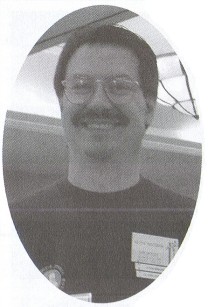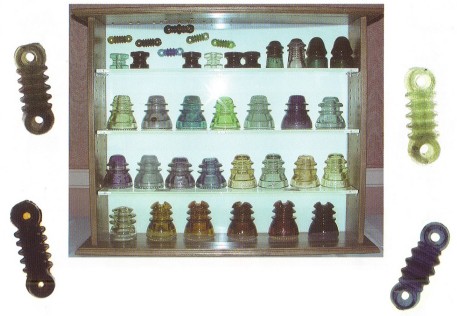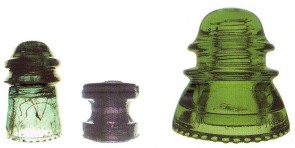Color South of the Border
Reprinted from "Crown Jewels of the Wire", September 2001, page 12
Display by:
Keith Roloson
6220 Carriage Court
Cumming, GA 30040-9111
770-781-5021
kroloson@mindspring.com
WINNER:
1st Place N.I.A. Foreign
This display has a wealth of color that in many instances can only be found
in insulators manufactured in South America and Mexico. Represented here are
spools, radio antennae insulators, telephone insulators and electrical
transmission insulators from Colombia, Mexico, Cuba and Argentina.
Not much is
known about their origins. We do have some history on the Zicme company, and
following is some information that I hope you enjoy.
Zicme was founded by a
Jewish immigrant to Colombia. He began a glass business which included
insulators. Colombia was and is known for salvaging everything, and scrap glass
was no exception. Many of the Zicme colors cannot be found in any other
manufacturer. The owner was able to start the factory successfully because the
Colombian government favored domestic companies wherever possible.
Zundel y Cia.
Ltda was founded by Salomon Zundel on Dec. 29, 1955 in Bogota, Colombia.
Production of CD 106, 154, 203 and 1050 insulators lasted for only four short
years during 1961-1966. These insulators with the exception of the spools and a
few of the first run CD 154s are all embossed ZICME which is the trademark for
the company which is short for Zundel Industria Colombiana Materiales
Electricos.

From an on-line conversation with Caleb Thimell, one of three men
responsible for bringing out most of the Zicme insulators:
Keith: Just wondering
why so few aqua Zicme's in any CD? I figure there are under 14 CD 154s, just a handful of spools, etc. Aqua is the "natural" color
of glass. Did Zicme use mostly cullet? Why so many purples? Did he recycle glass
with manganese?
Caleb: There are plenty of aqua Zicmes in existence, at least in
CD 154. It's just that collectors focus on the valuable and pretty colors first
when out hunting for them, so we have left behind the less desirable colors in
favor of a spectacular purple.
However, I think they are scarce in spools. I
have only seen but one aqua spool so far. And I'm counting the ones I saw
installed on buildings. [Note: A few others are known, about 5 maybe were
brought in by John Nasci and Vince Reh at the Williamsburg National, so perhaps
6 total, including the one in this display.]
Not sure of aqua CD 203s because
the CD itself is so scarce and rarely seen anywhere. Zicme used a lot of
recycled glass in their insulator production. But they also had the National
University develop a recipe for their glass too. So it was probably a sloppy
arrangement where cullet was tossed in perhaps when the batch got low or at
least as needed.
Dark colored Zicmes are tough pieces plain and simple. It's too
bad the blackglass ones are so under-appreciated when they are genuinely tough
pieces.
(Information compiled by Keith Roloson for display handout.)

Color South of the Border by Keith Roloson
1st Place N.I.A. Foreign
Suspended along the top row are six different radio antenna insulators. All
are Mexican in origin except for the Argentinian large middle rib style in an
odd dark green. Flanking the display are yellow green with amber swirls; root
beer amber, fizzy seafoam yellow green and sapphire blue/cobalt.

CD 214 Nacionales Telgraphos, yellow from Mexico; CD 154 Zicme super fizzy
medium purple with olive "tadpole", CD 155 Telecom in vivid golden
straw, CD 203 Telecom in straw and rare with sharp drip points, CD 106
unembossed Zicme in teal with oxblood swirling, CD 105 unembossed spool in
violet cranberry made from cullet by Zicme -- all from Colombia; CD 154 with the
embossing MIN. COM. CUBA (Ministry of Communications of Cuba) in a depression
glass green color -- possibly made in Russia.

| 